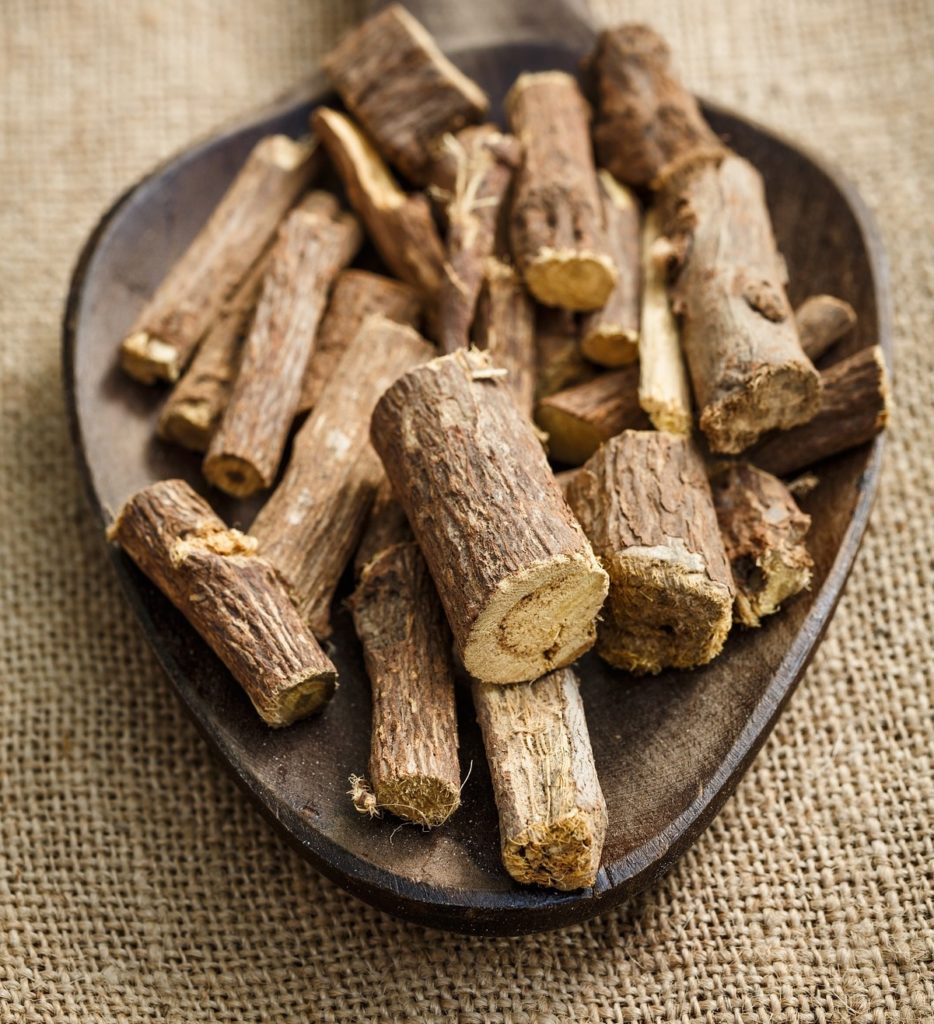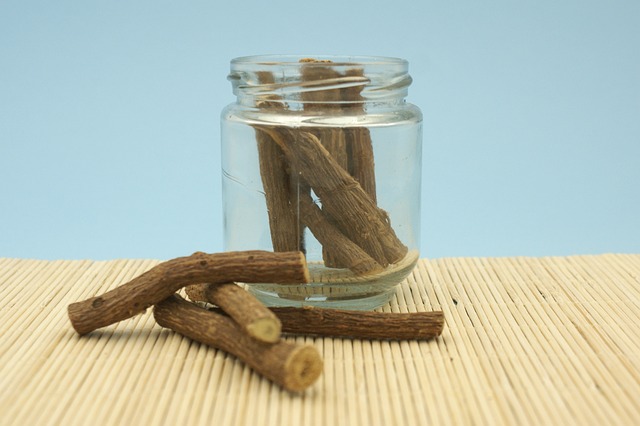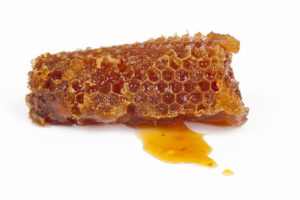Topical Use of Licorice Root

Licorice root has been used in both European and Asian herbal medicine for hundreds, if not, thousands of years. The root extract is also found as a distinct flavoring, often in candies, although many modern licorice products are now flavored with anise or fennel. These herbs provide a similar flavor, but without the associated risks that come with licorice consumption.
Medicinally, licorice has been used for numerous applications. However, caution is warranted with internal use, as the compound glycyrrhizin can deplete potassium and raise blood pressure. In severe cases, potassium depletion from licorice consumption can be life threatening.
Personally, I have found licorice-root extract to be very useful as a treatment for numerous skin conditions. In fact, I always have a small bottle available as a standard topical treatment for almost any condition where a doctor would prescribe a topical steroid cream.
Licorice Root’s Effects
Licorice root has antimicrobial, antioxidant and anti-inflammatory activity. Compounds from licorice have been shown to slow the degradation of natural steroid compounds in the skin, increasing their anti-inflammatory effects (Edward 1990). In addition, licorice root has other direct anti-inflammatory properties that can help with inflammatory conditions (Asi 2008).
Research on Specific Skin Conditions
Atopic Dermatitis (Eczema)
Often referred to as eczema, atopic dermatitis is an itchy skin rash that typically presents as red and inflamed skin. Standard treatment for atopic dermatitis is often a topical steroid cream.
In a study of patients with atopic dermatitis, a topical steroid cream was compared to a licorice-based cream. In mild to moderately severe patients, licorice cream was as effective as hydrocortisone (Angelova-Fischer 2014). A similar study also treated atopic dermatitis patients with topical licorice and concluded that it was an effective treatment (Saeedi 2003).
Psoriasis
Psoriasis is a skin disease often causing inflamed skin with silver scales. Typical treatments usually involve steroids or other immunosuppressants to decrease inflammation, but some cases can be recalcitrant, or difficult, to clear.
A recent review found eleven trials where licorice extract was combined with standard treatment for psoriasis. The addition of licorice improved the clinical course for patients without increasing side effects (Yu 2017). However, the author’s note that some of the studies included flaws and more data would be useful to further review the benefits of licorice.
Herpes family viruses
Numerous studies have found antiviral effects from licorice root (Fiore 2008). Studies in humans show activity of licorice extracts against herpes family viruses. One study in hepatitis B patients with Kaposi’s sarcoma-associated herpes virus (Xie 2011) and a separate study in patients with shingles (Aikawa 1990) both found improvements in symptoms with intravenous licorice-extract treatment. In mice with herpetic encephalitis (herpes infection of the brain), injected licorice-root extract increased survival rate by 2.5 times while reducing viral replication in the brain by 46% (Sekizawa 2001).
While topical studies using licorice extract for herpes infection do not appear to be published, based on the available data and historical use, it appears to be a reasonable alternative for treatment of different topical viral infections. Potential indications could include shingles and herpes simplex type 1 and type 2— both oral (cold sores) and genital outbreaks.
Licorice-Root Solid Extract

In my experience, the easiest form of licorice to use topically is as a solid extract. Solid extracts are concentrated extracts made in a base of glycerin. They have a deep black color with a similar consistency to syrup. They are easy to apply to the skin and rub in. During topical application, If excess extract is not removed, it can stain clothing. For topical use, twice a day dosing is typical.
Conclusion
In my own personal first aid kit, I keep licorice root handy as a treatment for skin irritations and rashes. It is simple and safe, especially for topical use. Research supports its benefits for atopic dermatitis, psoriasis and, potentially, for viral skin infections. It appears to offer a potentially viable alternative to topical steroids and topical antivirals in some situations.



